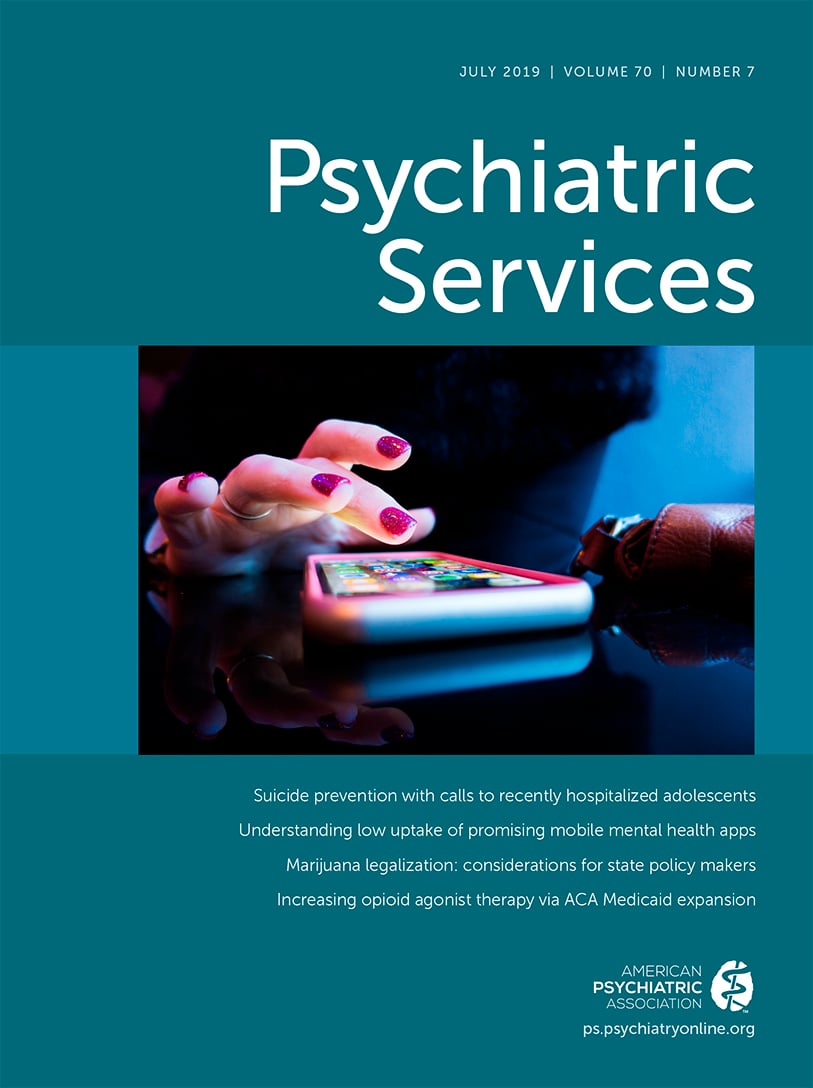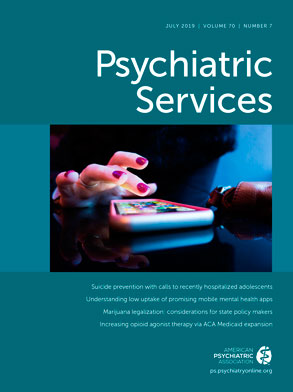As the landscape of marijuana access and use continues to evolve in the United States, it is imperative that states monitor the public health implications, many of which are not yet known. In a comprehensive 2017 report, the National Academies of Sciences, Engineering, and Medicine reported on the current scientific knowledge about the potential health benefits and harms associated with marijuana use (
1). The report cited evidence that cannabis can have significant benefits in reducing pain associated with some medical conditions, including multiple sclerosis and pain and nausea associated with cancer chemotherapies (
1). Conversely, evidence suggests that cannabis use is associated with increased risk of involvement in a motor vehicle accident, unintentional overdoses in children, chronic bronchitis among heavy users, a serious but modest increased risk of developing schizophrenia or other psychotic disorders, and impairments in learning, memory, and attention among youths (
1). Importantly, the report found that much about potential health effects of recreational cannabis use, especially in light of increasing potency of products being dispensed, is still largely unknown, a surprising conclusion given the rapid movement toward legalization.
States that are considering full legalization should identify resources and develop procedures for a systematic public health surveillance infrastructure that will measure the public health effects of legalization. Furthermore, states should invest their new marijuana tax revenue in collecting relevant data before new laws are enacted so as to have solid baseline data to assess cannabis-related benefits and adverse outcomes—including hospitalizations, emergency department visits, DUIs, motor vehicle accidents, and incidents of mold contamination or overdoses—to be able to accurately measure rates of change in these incidents after legalization.
After Colorado fully legalized cannabis in 2012, experts from several Colorado state agencies devised a public health framework for legalized cannabis (
2) that highlights three primary responsibilities for public health—assessment, policy development, and assurance. This framework could be especially useful for other states considering legalizing cannabis. Assessment might include population-level surveys to measure self-reported cannabis use in its various forms and relevant effects; systematic collection and analysis of administrative records of cannabis-involved hospitalizations and emergency department visits; improvement of data collection on cannabis involvement in DUIs, including blood tetrahydrocannabinol measurement thresholds and practices; and adaptation of food-borne illness recordkeeping for use in tracking contamination of cannabis products with mold, bacteria, or pesticides (
2). Policy and regulation development is another central function identified in the Colorado public health framework. It includes considerations around taxation, hours of sale, retailer licensing requirements, packaging requirements, limits on marketing that could be directed to children, and prevention education campaigns. Finally, assurance involves enforcement of all policies, regulations, and inspection of cannabis production, as well as potency and contamination testing.
With much still unknown about the short- and long-term health effects of cannabis, states contemplating legalization will need to plan for these rigorous forms of policy surveillance and avoid the temptation to plow these substantial new tax revenues into nonhealth or nonhuman welfare purposes. Key issues for policy makers to consider are the effects of widespread access for adults on youths’ consumption and brain development as well as the effects on other health outcomes (such as highway fatalities or increased risks for psychoses) in both youths and adults. Average cannabis potency increased from 4% in 1995 to approximately 12% in 2014. Among the most pressing concerns are the unknown effects of more potent forms of cannabis products, at levels of potency never before available. As a corollary, should states more carefully limit the potency of cannabis products?
Another key concern that states must address is the appeal and inevitable access of edible cannabis products to youths. The allure of products such as cannabis-infused gummy bears, cotton candy, brownies, cookies, and candy is undeniable and, arguably, goes far beyond the reach of Joe Camel in enticing children to smoke cigarettes. To what extent does the appeal of these edible products increase both intentional use by older children and unintentional consumption by young children? And how effective are packaging restrictions and other methods in helping control this type of diversion to young people? These are important concerns, because the long-term effects of new high-potency cannabis products are unknown, especially in young people who are still in the midst of neurocognitive development.
Unfortunately, comprehensive, federally sponsored policy research on legalization is likely to be slowed by conflict between the federal and state governments about legalization, leaving states with the responsibility for surveillance and resulting in inherent fragmentation between different state approaches. Legalization of marijuana is a major public health policy change, and one can only hope that public deliberation in the states considering enactment is informed and cautious.

